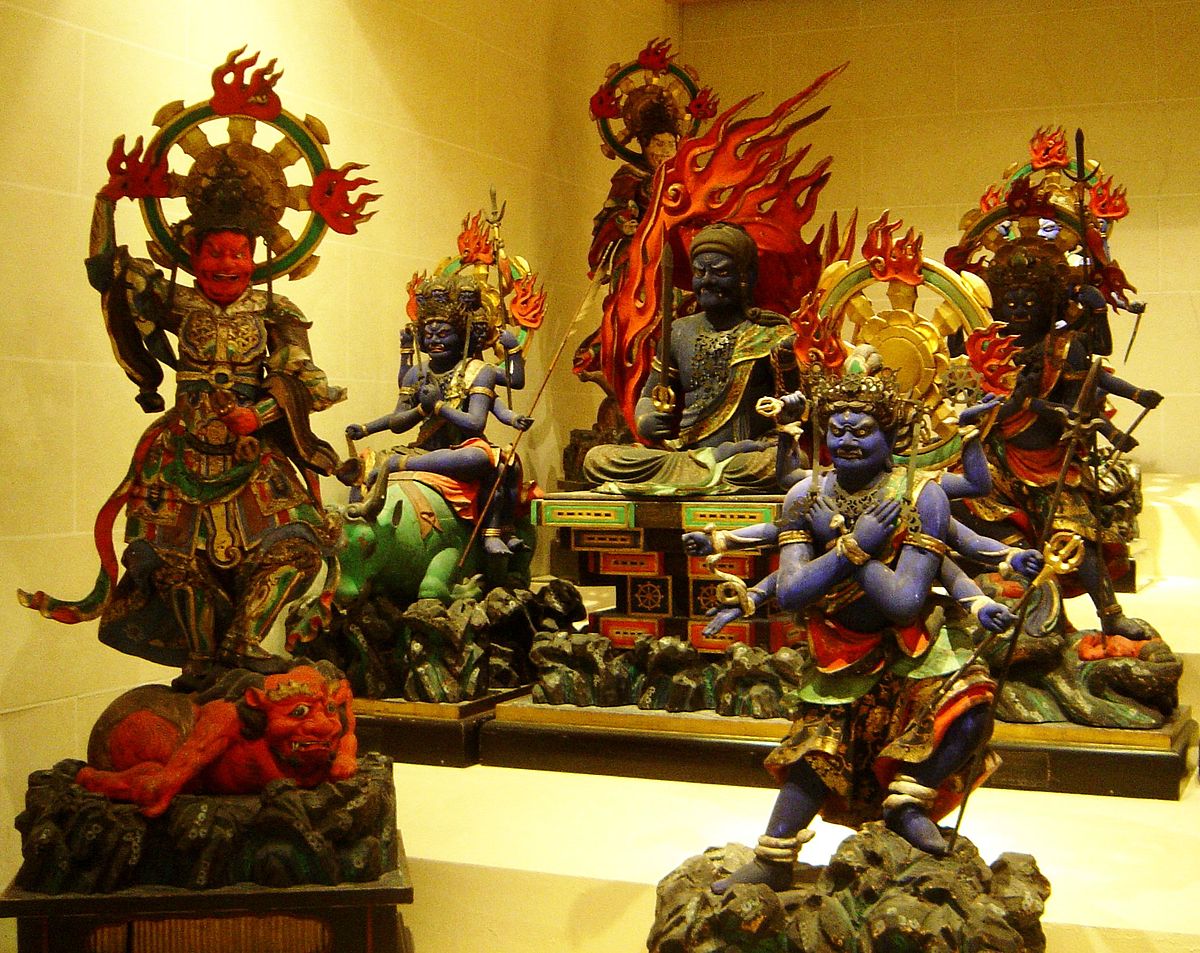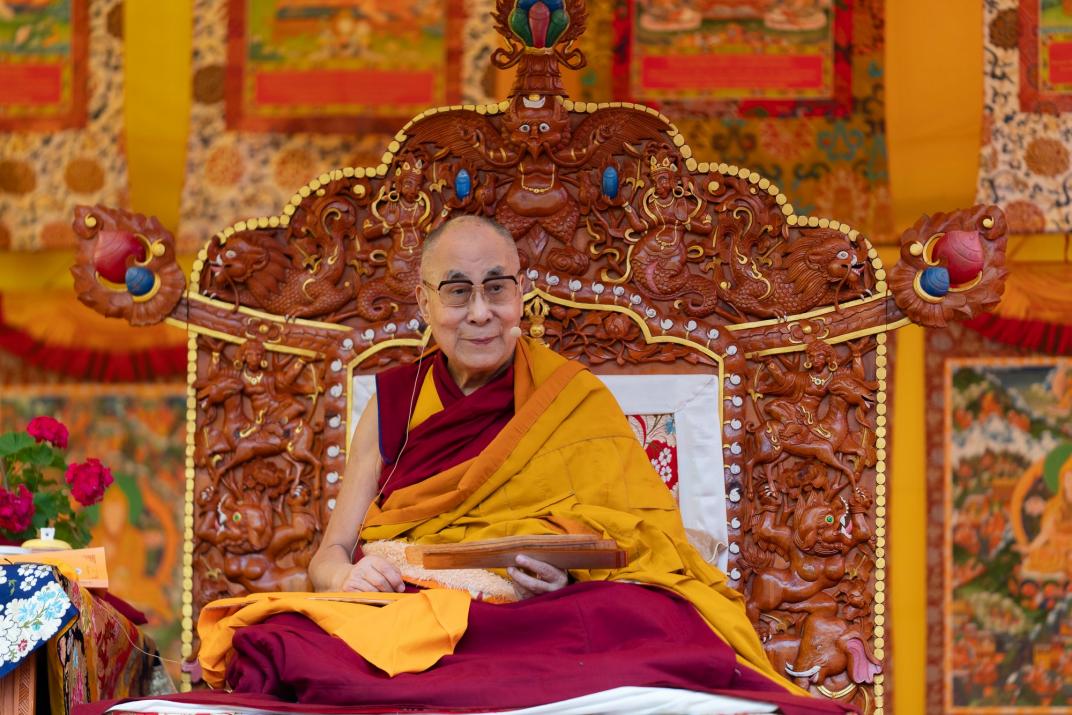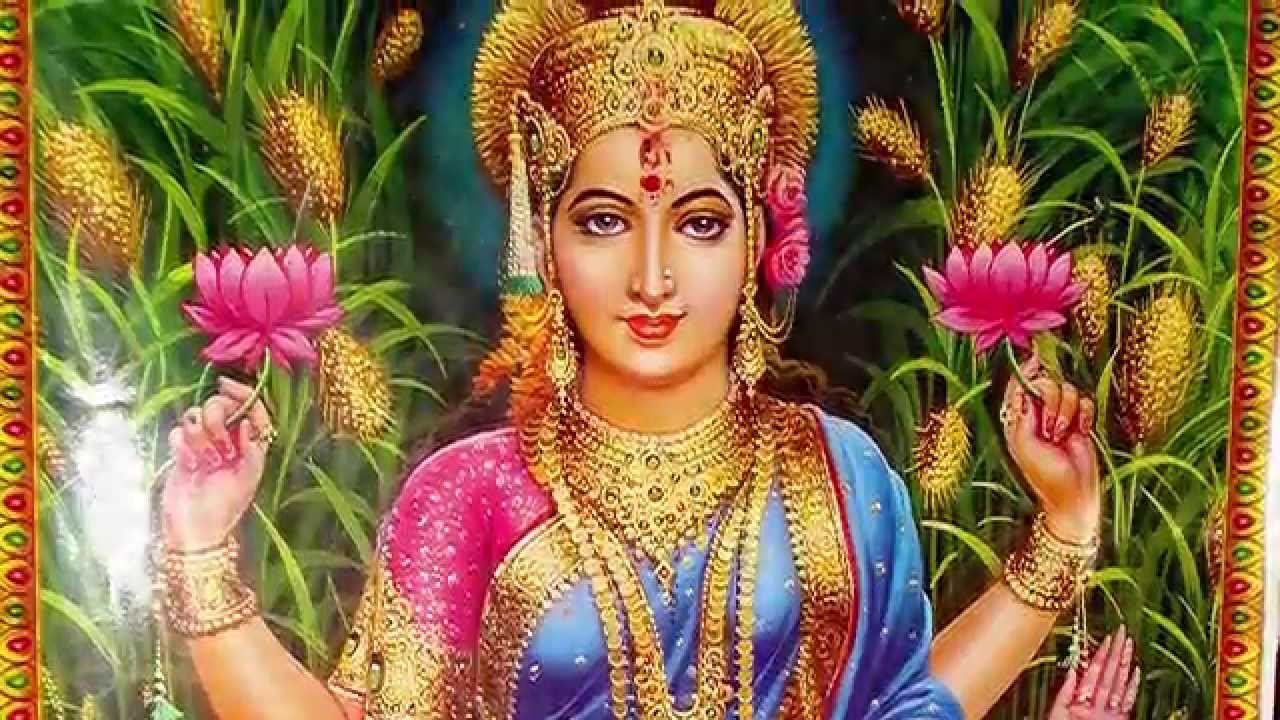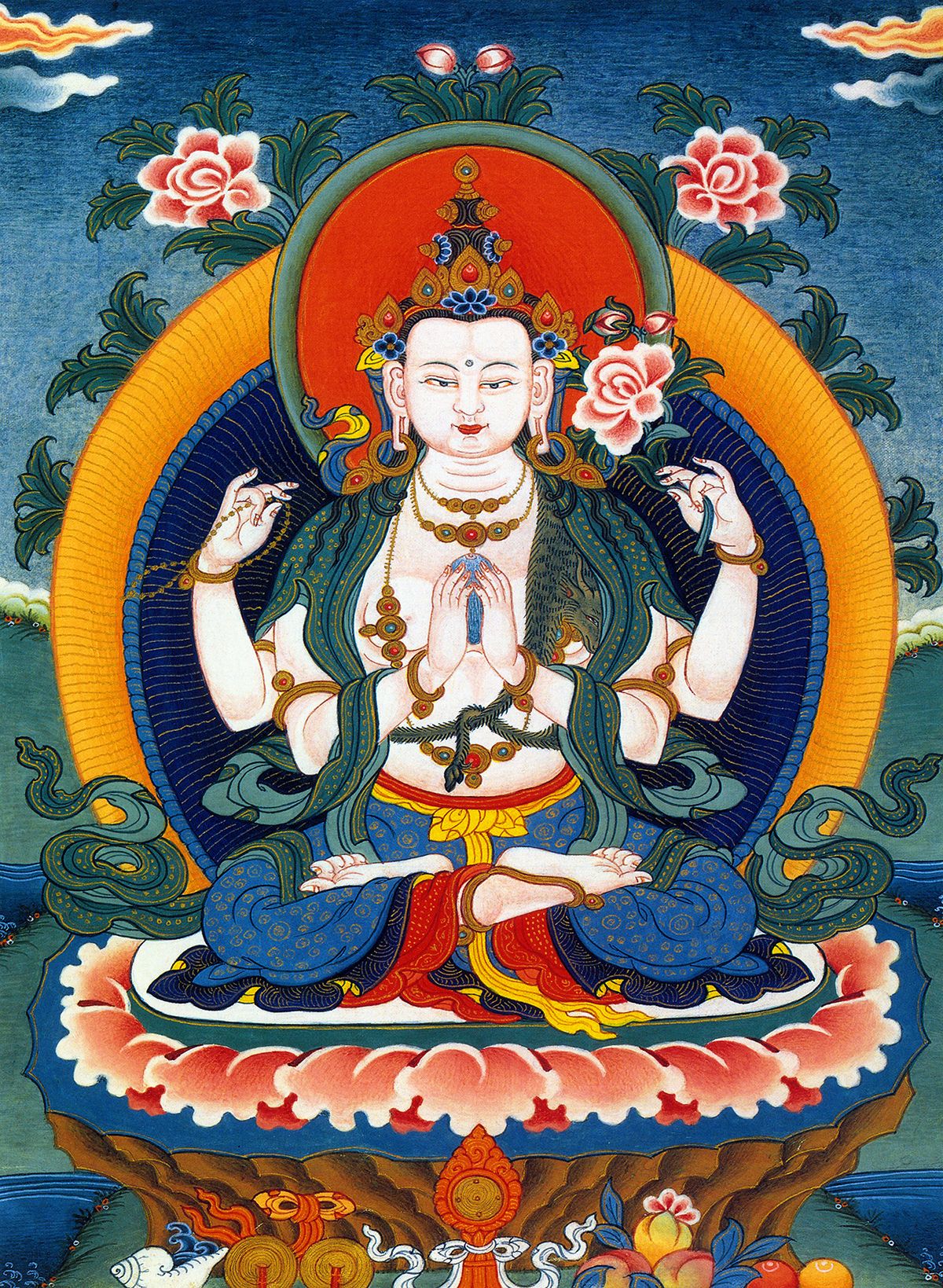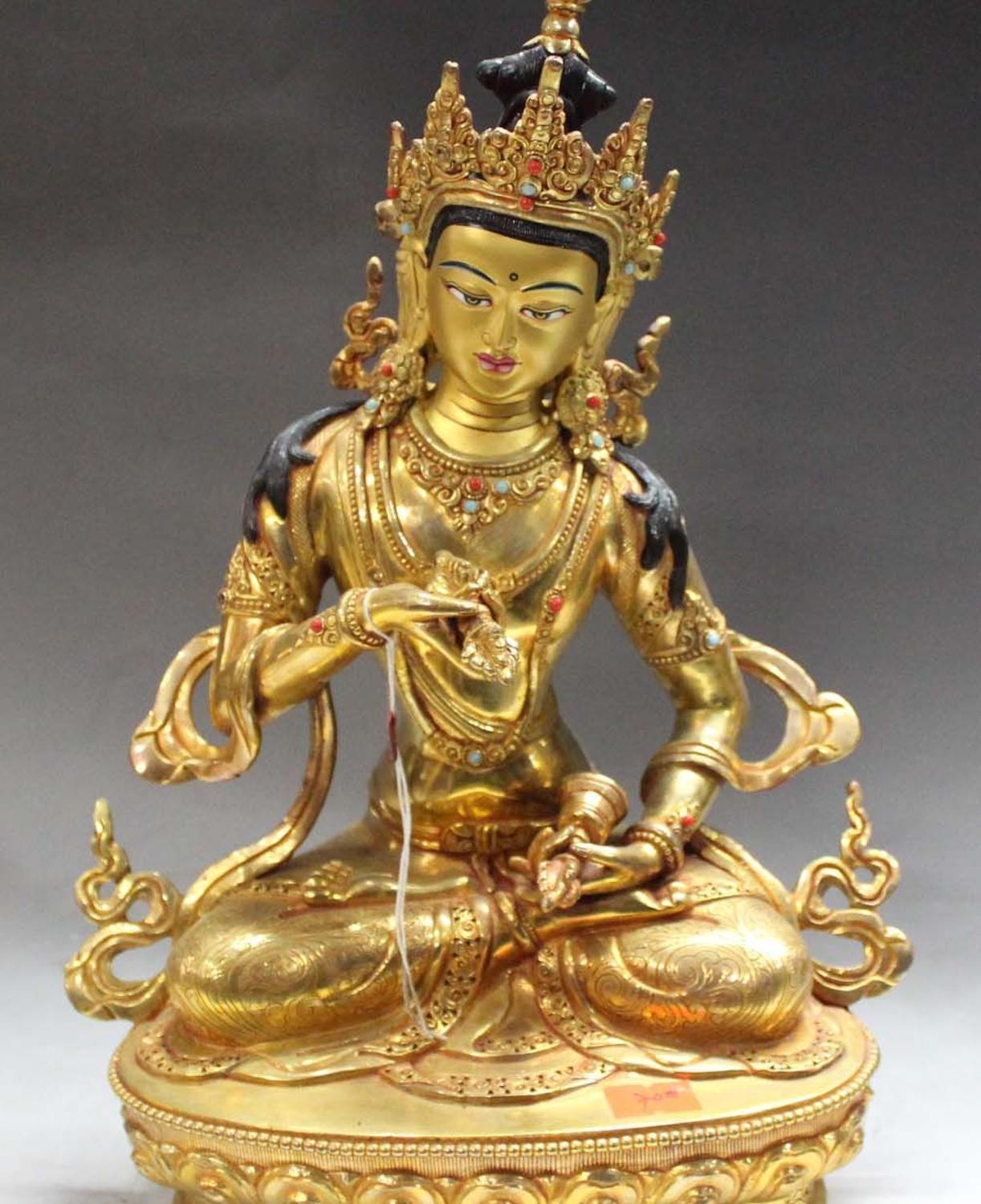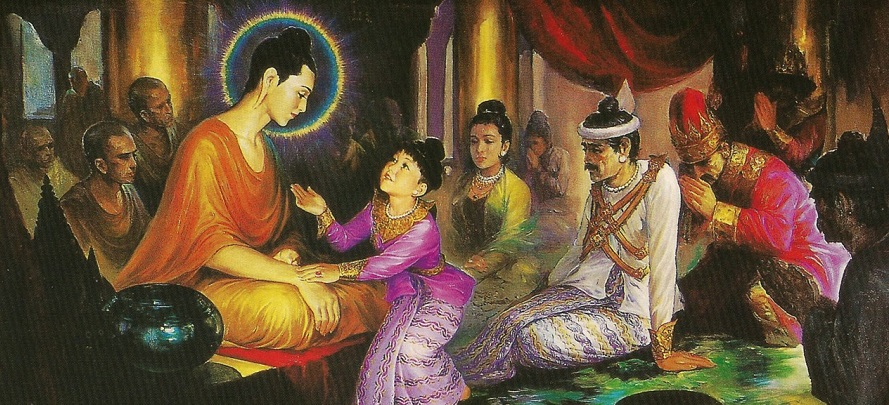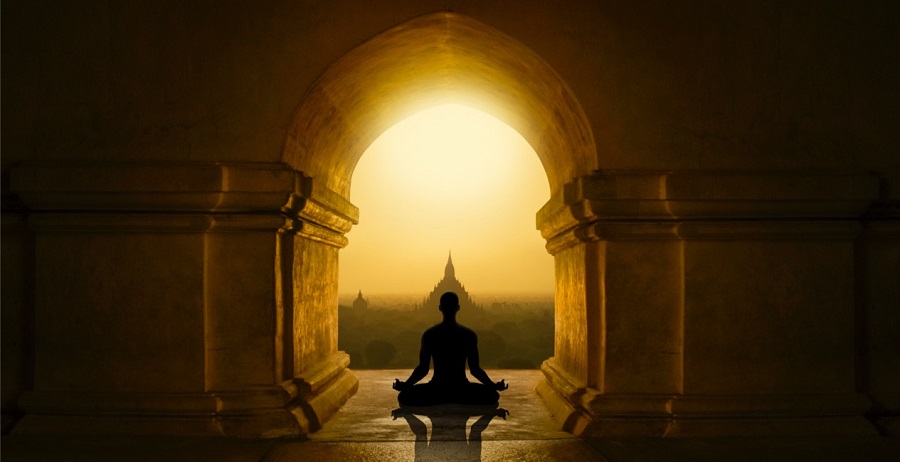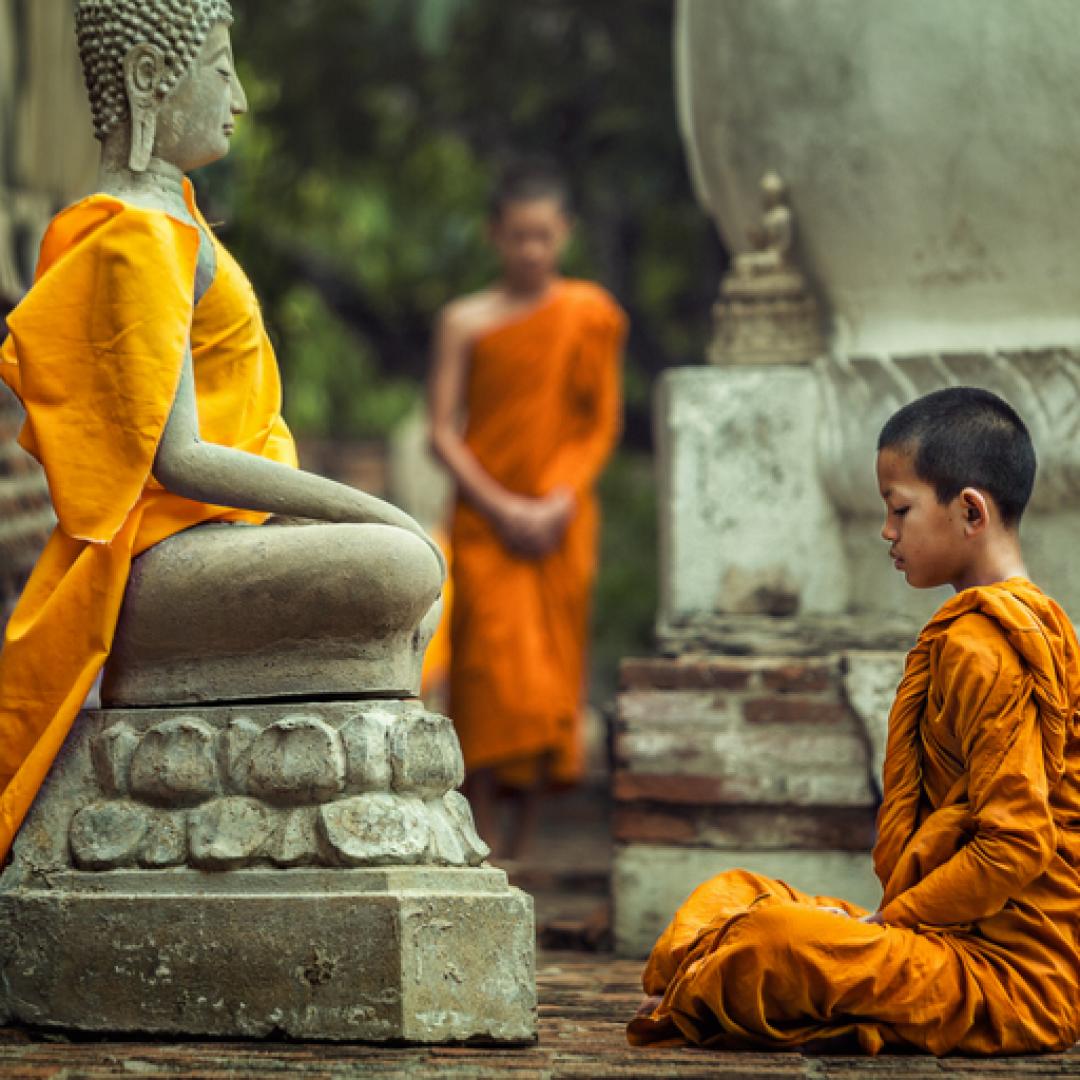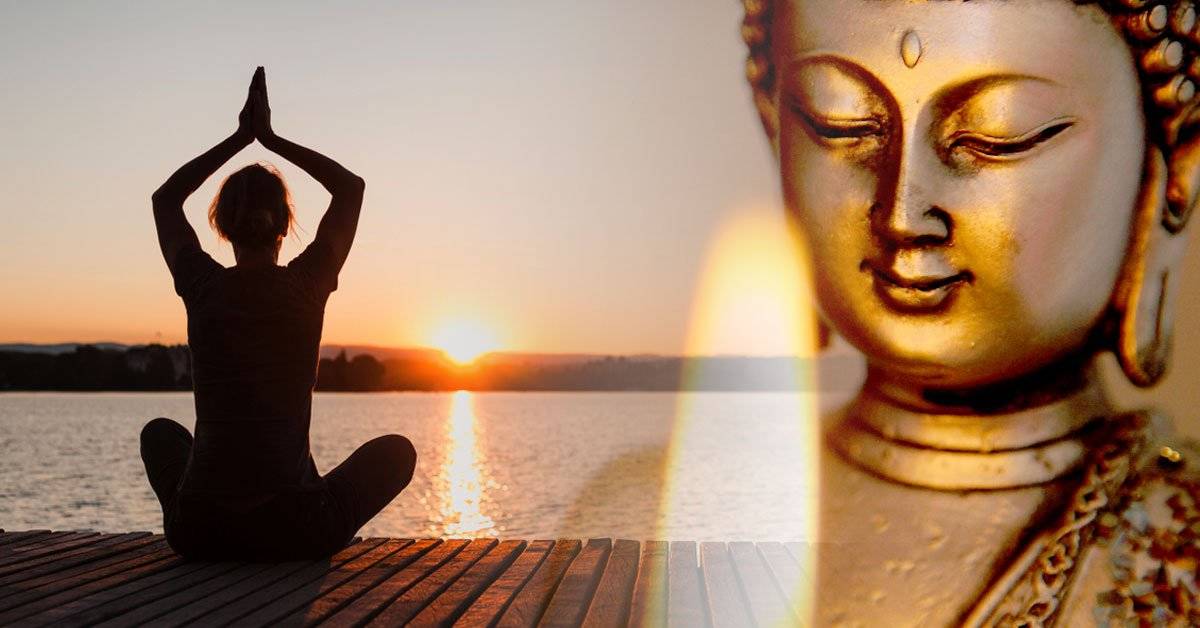Gautama Buddha expressed that the traditional gods were out of place in the afterlife, this as a perspective of liberation, since Buddhism is a religion without God and therefore discovering who are the gods of buddhism It allows you to have a broader knowledge about this practice and in this article we will teach it to you.
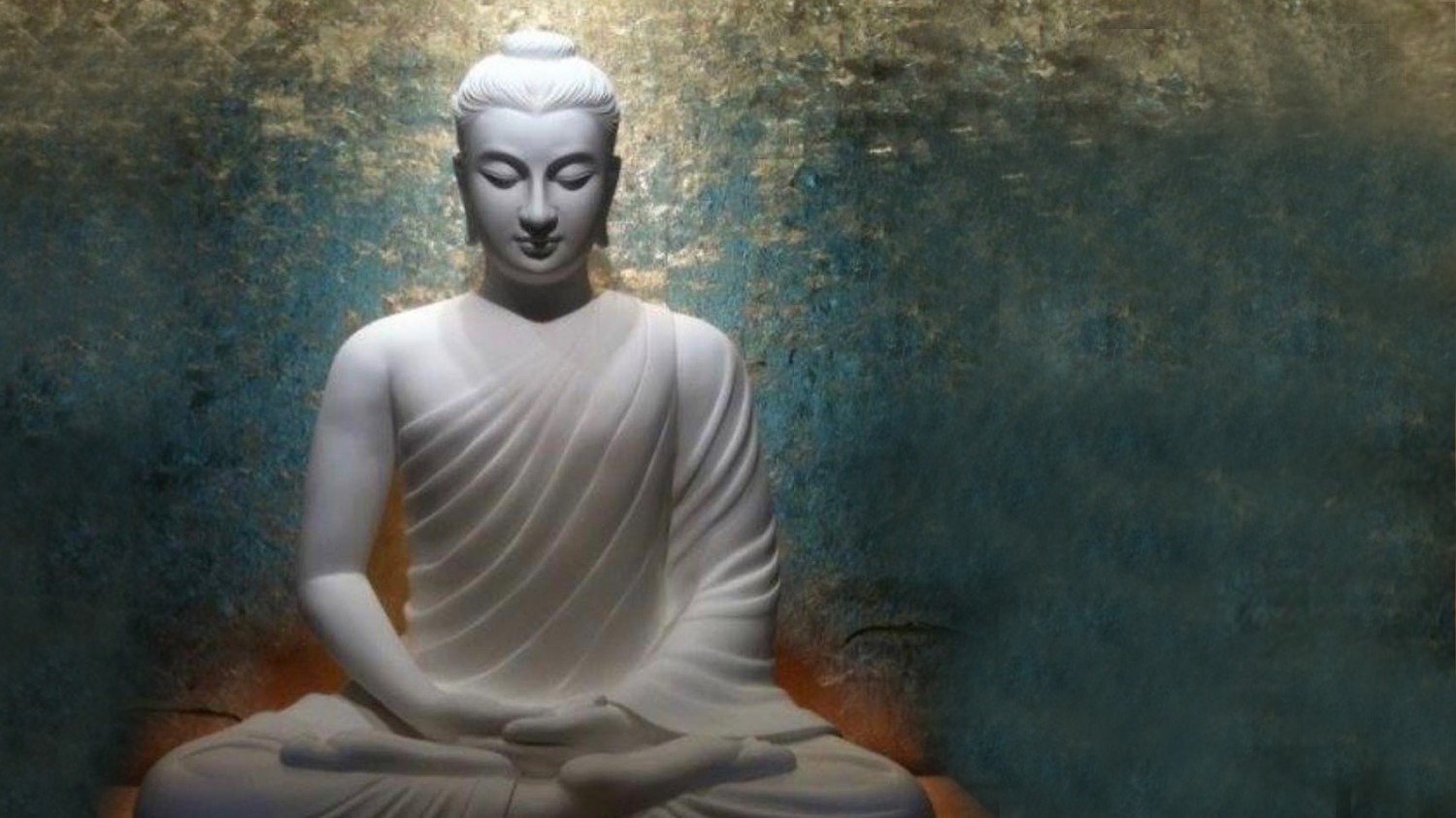
gods of buddhism
The pantheon of the gods of Buddhism is represented by various divine beings who are given various meanings, forms and origins. These gods of Buddhism, along with the buddhas and bodhisattvas, have always existed as deities in the 6 realms of existence and thousands of world cycles. In fact, elaborate statues of Buddhist deities were created to worship the gods of Buddhism, the Buddhas, and the high-ranking bodhisattvas in the Buddhist pantheon.
Generally speaking, there are various types of divinities that inhabit the spheres above and below the human realm. The most powerful are the gods of Buddhism who are identified as devas and brahmas; and other divinities like nagas, kinnaras and garudas that can be found in the human realm; finally, the Buddhist guardian deities (Dharmapala) can dwell in the higher realms but also in hell.
Descriptions of the gods of Buddhism
As mentioned above, there are various types of divinities that inhabit various places in the human world according to this religious practice, and below we detail each of them:
- Devas and Brahmas: they are superior beings that are among the first five heavens that are structured in layers above the human kingdom; these have the ability to manifest themselves in material or immaterial form.
- Nagas: they are semi-divine entities that manifest with the morphology of a snake or human appearance. The accounts of this religion point out that the most infamous naga «Mara» tempted the Buddha while he was meditating under the bodhi tree on the verge of enlightenment; Nagas are associated with bodies of water such as lakes and rivers.
- kinnaras: they are legendary creatures half human and half bird, these come from the Himalayas to help humans in difficult times; Generally, they are in a perpetual state of happiness, so it is normal that they are always dancing and singing.
- garudas: the garudas are large birds that have a certain enmity with the nagas, which is why they are often represented holding a snake in their claws; these have limited god-like characteristics and some can take human form if need be.
- Dharmapala: This is a Sanskrit word that translates exactly as "Guardian of the Dharma". These fierce Buddhist guardian deities are the protectors of Buddhism, and the destroyers of obstacles to spiritual realization; however, his fearsome appearance belies his compassionate intentions.
Although they are very powerful, the gods of Buddhism have not achieved the fulfillment of the final goal that is: Nirvana. As such, the gods of Buddhism are superior to humans, but they are not Buddhas.
The three jewels used by the gods of Buddhism
Despite the differences in the varieties of Buddhism, there are always the same three cornerstones that are called the Three Jewels. These are the Buddha, the Dharma, which is the teaching of the Buddha, and the Sangha, which is the community that follows the teaching.
So when a person accepts Buddhist philosophy and wants to make it part of his life, the traditional way is to say "I take refuge in the Buddha, I take refuge in the Dharma, I take refuge in the Sangha." The Dharma is the teaching of the Buddha that is based on the Four Noble Truths and this is symbolized by the wheel; and originally the Sangha was the monastic community and later this would include all those who followed the Buddhist path.
- The first jewel is the BuddhaTaking refuge in the Buddha is not hiding in the safety of a powerful being, taking refuge in this situation is more like moving into a new perspective, a new awareness of possibility within all of us. By taking refuge in the Buddha, we align ourselves with the ability to become a Buddha ourselves, to seek the ability to awaken to what the Buddha experienced; this precious jewel reminds us to find our own Buddha nature.
- The second jewel is the Dharma, is the path that seeks the teaching of Buddha and that will finally lead to awakening. So the Dharma teaches us compassion for ourselves and others through the understanding of the Four Noble Truths and leads us to free ourselves from fear and ignorance; this path involves embracing the teachings of the Buddha and applying that understanding to everyday life.
- The third jewel is the Sangha, which includes those who congregate in groups of any size to study, discuss, meditate with the desire to help and be helped by that group. The Buddha saw that interaction with others on the path is essential to the practice, and he noted that this is important for ordained monks as well as those in the community at large.
In the original teaching and in current Theravada societies, the Sangha refers only to monks, nuns, and other ordained teachers. The Sangha concept is interpreted more broadly in many Mahayana and Western groups to include all those who embrace the Dharma as a society.
The 5 precepts of Buddhism
Just as the three jewels form the simple framework for the transmission of Buddhist philosophy, the five precepts are the essential ethical guidelines for followers of the philosophy. The five precepts are not an absolute set of rigid rules, but rather provide a practical basis for a good and ethical life that will produce the right environment in which to seek our own truths, they are:
- Do not intentionally kill living beingss: We step on ants every day, and this isn't really carelessness, and I doubt it's possible to avoid occasionally beating a cockroach into oblivion, however, the premeditated killing of other humans and the mindless killing of animals by sport is certainly not desirable for Buddhists. The main goal of this precept is to develop concern for the safety and well-being of others and to have compassion for all living things.
- Take only what has been given: This is broader than not stealing as it means returning borrowed items and not taking unfair advantage even when it is still within the laws of the land; this means that you must develop a sense of fair play and generosity towards others.
- Inappropriate sexual behavior, but can also be interpreted as not abusing the senses: As the strongest drive after the survival instinct, the sexual drive will dominate our lives and cause much suffering unless directed wisely and skillfully. Excessive living, and in particular overeating, also causes pain; so this precept encourages us to be content with simpler lives.
- don't talk false, not to lie, slander, misrepresent or maliciously gossip: This teaches us to speak honestly and kindly and to have positive motives when we approach an argument.
- avoid substances toxics: This includes alcohol, unnecessary drugs, and stimulants such as tobacco and caffeine; this precept is important to develop rational thought and will allow the development of the inner clarity necessary for mindfulness.
As always, the Buddha was compassionate and pragmatic, recommending rather than dogmatically insisting that these five precepts were essential. But there is considerable good sense in each precept, and by living with them every day, the path becomes clear so that you can focus on your personal quest for enlightened understanding.
What are the gods of Buddhism?
Originally in Buddhist mythology, as mentioned above, there are beings called Devas, who are beings who feel and suffer as we humans perceive, in reality they have life in resurrection and this gives them greater knowledge and wisdom than any individual.
In addition, they are mainly characterized as being the most important on the path to true encounter and the goal of Buddhist philosophy. However, this tendency interprets that Siddhartha Gautama (Buddha) is the eternal illumination, the omnipresent sign of the universe and in relation to this he is the teacher of these gods of Buddhism whom he surpasses in teaching and methodology.
All the gods of Buddhism can be easily found in almost all Buddhist temples and monasteries, in addition to these being important figures in all schools for easy identification, and they are usually characterized by their forms, symbols and origins given by the six Buddhist kingdoms and thousands of world cycles, where most are represented as deities below the surface and above the human realm; these are:
Daitoku Myō-ō
This divinity is attributed to the cardinal point of the west and to be the God of protection and victory, so he has the ability to dominate dragons, snakes, as well as end evil to turn it into good. His appearance is represented with six: faces, legs and arms that wield swords and spears, remaining mounted on a white cow.
Fudō Myō-ō
It is considered as a guardian god of the Buddhist religion to which the condition of the king of wisdom is attributed, since it is among the four gods distributed among the four cardinal points; this god is worshiped in Chinese and Japanese Buddhism where they give him the name Acalanatha. The representation of him shows him holding in his hand a sword of fire and in his left hand a rope with which he binds demons and takes out his allies, the flames of him symbolize that he is fighting against hell.
Gōzanze Myō-ō
The symbolism of this god is linked to justice and the fight against anger, rage, as well as being the enemy of naivety; this divinity leads the protective gods. Generally, he is presented with three faces that show a menacing appearance, and he also has two legs and six arms that hold high-level weapons in each of his hands.
Gundari Myō-ō
He is a highly revered protector god, especially in Vajrayana Buddhism. He is attributed the cardinal point of the south, which is personified with three threatening faces, eight arms that wield weapons, and snakes around his neck and legs.
Kongō-Yasha Myō-ō
It comes from the Shingon cult of Japanese Buddhism, it is venerated as a protective god who embodies strength and impulse, he is attributed the cardinal point of the north and is usually represented with three threatening-looking faces and six arms, also in some images show him with only one face and four arms.
Tibetan Gods
They are governed by the political leader of all Tibetans called the Dalai Lama, who is identified as the highest leader in spirituality, in many of the schools they have different categories and vary according to their spiritual processes. This practice is dominant in all Mongolian and Tibetan peoples, the Dalai Lama is a very high level teacher whose origin is derived from the Buddhist Himalayas.
It contains a very appreciable participation, not only in the religious part but also in the social and economic aspect of Tibet, which covers many internal issues in each of its schools since the title of his holiness is granted to each ruler; within the Dalai Lama, there is the knowledge of the rituals to defend his participation as leader and power, which is tradition and heritage.
The Lama symbol is closely linked to the most famous Buddhist currents in the West, and in 2011 the monarchy decided to provide spiritual leadership according to its cultural origins.
Samsara
In Buddhism, samsara is often defined as the perpetual cycle of birth, death, and resurrection; or it can also be understood as the world of suffering and dissatisfaction (dukkha), the opposite of nirvana, which is the condition of being free from suffering and the cycle of rebirth.
In literal terms, the Sanskrit word samsara means "to flow" or "to pass"; this could be equally understood as the state of being bound by greed, hatred and ignorance, or as a veil of illusion that hides the true reality. In traditional Buddhist philosophy, we are all stuck in samsara through lifetime after lifetime until we find awakening through enlightenment.
However, the best description of samsara, and one with a more modern conception, may be the one provided by the Theravada monk and teacher Thanissaro Bhikkhu who expresses:
"Instead of a place, it's a process: the tendency to keep creating worlds and then move into them." And keep in mind that this creation and movement does not happen just once, at birth. We do it all the time."
So we are not only creating worlds, but we are also creating ourselves. Beings are all processes of physical and mental phenomena. The Buddha taught that what we consider to be our permanent self, our ego, self-awareness, and personality, is not fundamentally real; but, it continually regenerates based on previous conditions and choices.
From moment to moment, our bodies, sensations, conceptualizations, ideas and beliefs, and consciousness work together to create the illusion of a permanent and distinctive "me." Furthermore, to a great extent our "outer" reality is a projection of our "inner" reality; so what we take to be reality is always largely made up of our subjective experiences of the world. In a way, each of us lives in a different world that we create through our thoughts and perceptions.
We can think of rebirth, then, as something that happens from one life to another and also something that happens moment by moment. In Buddhism, rebirth or reincarnation is not the transmigration of an individual soul into a newborn body (as believed in Hinduism), but rather the karmic conditions and effects of life moving on to new lives. With this kind of understanding, we can interpret this model to mean that we are psychologically "reborn" many times in our lives.
Likewise, we can think of the Six Realms as places where we can be "reborn" at any moment. In one day, we could go through all of them; In this more modern sense, the six realms can be thought of as psychological states. The critical point is that living in samsara is a process, and that is something we are all doing right now, not just something we will do at the beginning of a future life.
Realm of Underworld Beings – Naraka
Hell, the afterlife, purgatory or the underworld have been seen as places of worry, burden, sadness, pain, agony and torture, among others, and are located in the lowest rank of all the worlds. But for Buddhists it is completely different, it is a place where the residents are not prisoners, but they go through tremendous experiences to get rid of the negative karma that they have lived throughout their lives, so going through this is just something completely temporary, where once the tests are over you can leave this place.
Realm of the Spirits or Ghosts – Preta
In Buddhist culture there is this realm that is cataloged as "consumerism", where beings and creatures live in absolute misery, they are mainly selfish, greedy and miserable in absolute baseness, based on desires and aspirations which could never satisfy.
These beings do not like to eat food, and although they eat constantly they feel dissatisfied and maintain the desire to eat, in artistic representations they are drawn as beings with long, thin and very pale necks, who demonstrate a state of possessiveness like hungry ghosts.
The Kingdom of Animals – Tiryak-Yoni
As its name indicates, this kingdom is inhabited by creatures and living beings that are not human, but are purely animals, transparent and without any intelligence, who only act with awareness of what they do, but do not feel the fact that their effort is useful to anyone, they always go forward just to get what they want.
The Kingdom of Human Beings – Manusya
It is the most valuable mental place for all practicing beings of the Buddhist culture, since in this realm the bases for passion, love and the search for good things are created, for which it is cataloged as one of the best by its capacity and opportunities to develop mentally, but beyond that it is worth noting that precious memories are produced in this, mainly those that are in the kingdom of the gods.
The Realm of the Gods – Devas
In this kingdom live the gods or mortal divinities, it is a completely favored place of joy and happiness where personal pride reigns, also within the qualities of this place are strength and power, as if they were gods or mythological divinities ; but although these beings are gods, they do not have the capacity or power to be supreme or divine creators because of their mortal qualities.
Additionally, among their main characteristics you can find hope, the desired victory and the ego, with them they easily achieve success where once obtained they continue to be charming, otherwise they would be incomplete beings like the preta.
The Realm of the Demigods – Asuras
This kingdom is dominated by the conflicts of the military and the jealousy that is generated between the warriors; those who inhabit this kingdom have a pleasant life, but they envy those who inhabit the Deva kingdom for believing themselves to be inferior to them, just as human beings observe the animal kingdom in the Tiryak-Yoni, in which karmas are manifested as a project samsara-like resurrection.
protective goddess
These deities are popular for their sense of protection for those who invoke them, they are called Tārā, and are specifically linked to Tantric Buddhism where they are considered the mother of liberation, possessing qualities such as mercy, humanity, success in work and adventures.
It is highlighted that this divine personification is a princess full of wisdom who is greatly admired and loved, some indicate that this Buddhist goddess is the Virgin Mary who is venerated by the Catholic religion; For Buddhists, these goddesses instruct and guide others, so they are considered to be of great help and collaboration for the practice of this culture.
Other goddesses of Buddhism
To have a slightly broader knowledge about other influential goddesses in the culture of Buddhism, below you will be presented with some of the most important, these are:
ekajati
She is the representative of wisdom, in addition to being the benefactor of the good that wins over evil; She personifies her by showing a knot in her black hair, a chest and an eye surrounded by flames of fire that represent her absolute triumph.
Green Tara
She is the spouse of the first Buddhist in Tibet Songtsen Gampo, who stood up to impart great teachings and methods; This divinity represents protection from danger and evil, she usually ends everything in an uncomfortable way for man, for whoever invokes her with faith and devotion, she instead grants mercy and healing.
kurukulla
This goddess is listed as responsible for the union of couples; In addition, she is invoked and honored for when you want to achieve power, protection and evolution. This goddess is usually represented with a red hue on her skin, four arms holding her an arch of flowers, and around her there is a blue protective ring with which she drives away evil spirits and harmful deities.
Machining Landrop
She was the first follower of Chod Mahamudra, she is a woman with a strong and determined religious personality, and this female is the mother of the Buddhas of the Three Ages.
Norgyuma, Yellow Tara
This beautiful goddess can grant wealth, abundance, prosperity and fortune in all aspects both spiritually and physically; as well as the prosperity of the cosmos to all the living creatures of the world, through the mind and the heart.
Mandarawa
This goddess was recognized as a Dakini of the Indian Buddhist teaching, for being one of the companions of Padmasambhava, becoming a mentor of the gods of Buddhism.
marici
Usually, it is invoked by the faithful believers who travel constantly; This divinity represents the dawn of nature, in addition to eliminating any obstacle. They personify her with three heads (one red, one white and one yellow), she has eight arms which hold weapons and defensive elements such as ropes and spears, her entire body is on a throne pulled by seven pigs.
Salgye Du Dalma
When we do yoga, meditation or want to have a regenerative and deep sleep, this goddess is invoked to protect the sacred sleep during the night, in this way the tranquility that is needed is achieved.
samanthabhadri
She is the goddess who symbolizes the void, the beginning of the pure as is the color white, that is why she is shown totally naked as a symbol of purity; and in Buddhist culture she is popularly known as "every good woman".
white tara
This goddess is sitting in a meditative posture where one of her feet rests on a small lotus flower, her compassionate eye is open, as well as her two palms; The significance of this representation denotes protection and defense towards the poor, also granting gifts such as the protection of feelings, forgiveness and mercy.
Goddess Palden Lhamo
She is the only goddess worshiped by Tibetan monks, as she is considered the patron saint of Lhasa and the Dalai Lama, her skin is black and blue, with flame-illuminated eyebrows and mustaches, in one of her hands she holds a cup with part from her son's brain (as an incestuous act she had), she finds herself surrounded by ropes made of heads, and a glamorous, glowing sun disk is displayed on her navel.
Goddess Tsongkhapa
It is easy to recognize and differentiate this goddess among others of the Buddhist culture, due to her characteristic yellow hat preserved for the Gelugpa, her hands in the position of the spinning wheel of doctrine and the sword at her side that denotes wisdom as well as the book on The lotus flower; this goddess is deeply documented as a figure in Tibetan Buddhism.
Goddess Vajrapani
She is one of the three deities among the gods of Buddhism who protect the Master Buddha, she is the goddess of power. In his personification, he usually wears a crown and clothing is covered by a tiger skin, in his right hand he has a Tibetan vajra (a kind of bell) and in the other hand a lasso with which he binds and captures all the opponents of Buddhist culture is also surrounded by flames as a symbol of its power over evil.
Kwan Yin Goddess of Mercy
This goddess is highly revered for being the female version of Buddha among the gods of Buddhism, so she is the holiest woman in the religion. She represents mercy and mercy, as well as fertility, which is why she is considered the mother of all and as a woman and mother, she is the protector of all women and children. Many believers and practitioners claim that she is the reincarnation of the Blessed Virgin Mary in Catholicism, these same believers say that she did not enter heaven, because she could not free all human beings from her sufferings.
thousand arms
This goddess is worshiped in various regions with different names and is used for various purposes, for example, in Iran and Japan it is idolized with the name of Kannon and represents piety, while in the sanctuaries of Taiwan it must be placed out of respect in a main altar, in China, Tibet, Northwest and Southeast Asia she is one of the most important and primordial goddesses of this religious practice.
What unites all its representations is the symbolism of mercy, forgiveness and compassion, this divinity is also responsible for the transformation of Shakyamuni and Maitreya Buddhas, in the Buddhist schools they maintain it in all their teachings both in discipline and as in the practice of activities that lead to salvation with his help, remembering that Buddha is a person like any other and thus they also have the opportunity to achieve nirvana.
esoteric
This goddess is invoked when there is no tranquility, so it is common to find her in any Buddhist sanctuary as well as in any home altar. She is depicted as the symbol of a normal woman, wearing a Buddha-shaped crown and in her arms holding protective articles, lotus flowers, and willow branches.
buddhist elephant gods
There is a great belief and respect towards elephants in the Buddhist culture; so these sacred animals symbolize strength, power and transcendence. It is believed that they were the ancestors when the earth emerged for its development, their bodies represent the earth and their four strong and powerful legs symbolize the four elements that carry the weight of the cosmos; Likewise, Buddhism emphasizes that elephants are purely spiritual, so they are the essence of light.
Hindu belief says that the wonderful elephant-headed deity Ganesha was born after a great global catastrophe, conceived his first child and anointed him with the sacred elephant milk with sandalwood paste to structure the rest of his children.
Beliefs about Buddhist elephants
Next, the beliefs and invocations that the believers and faithful of Buddhism use about the elephant are mentioned:
- The figure of the elephants, are used for protection and good luck in both businesses and homes.
- Students can ask for protection, help and illumination during the presentation of exams and evaluations.
- An elephant is the perfect symbol of symbiosis or exchange of energy.
- This animal brings security, prosperity and certainty to everything you want to undertake.
This deity is extremely important, so during his anniversary great celebrations are held offering abundant food, flowers and fruits as a tribute to this God. In this tradition, food is usually consumed in large quantities and also part of it is taken to the coast of the Indian Ocean to be delivered to the sea.
According to Indian Buddhism, more than 500 years before Christ, Queen Maya received an omen from white elephants, and after nine months of pregnancy she gave birth to a man who would be a great emperor, faithful protector of all human beings.
This is how she then gave birth to Siddhartha Gautama (Buddha), just as the king's astrologers had predicted, who said that a man would be born who would be the emperor of the earth and protector of human beings. In fact, it is thanks to this story that elephants are so revered and sacred in Buddhist culture.
Major gods of Buddhism
In this section of the article we will show you in a simple way some Buddhas to which various qualities, figures and kingdoms are attributed:
Shakyamuni Buddha
The original and historical Buddha, who lived around 600 BC, is considered the main founder of the Buddhist religion, is usually represented with blue hair due to the aura that surrounds him at all times, he is sitting in a posture of meditation and has a begging bowl held in his left hand, while his other hand rests on the ground calling the earth to bear witness. This Buddha considers that the world and/or the earth must act as a witness to his infallible path of light within the gods of Buddhism.
Maitreya Buddha
He is totally the opposite of the previous Buddha because he represents the Buddha of the future, he is the last earthly Buddha of the fourth and present era, he is trained as the great teacher and is supposed to be in charge of guiding humanity towards Buddhism. In his representation he has a sitting posture with both feet on the ground, because in this way he can stand and sit at the same time, denoting what is to come, he also wears a crown of intertwined flowers, with a hand gesture demonstrating the Dharmachakra which in Buddhism means to teach.
Avalokiteshvara Buddha
It is amazing to observe this Buddha, as his eleven heads and thousand arms alone make him incomparable among other Buddhas; this represents compassion, as he is considered the patron saint of the Tibetans. He is a deity of light, and the main characteristic of him is that he is so pious that he did not go to Nirvana to help the afflicted and bring them to salvation. Currently there are more than one hundred and eight (108) representations of this God Buddha Avalokiteshvara, but all of them have a crown placed on the last upper face, which is the highest, which gives it greater notoriety.
Manjushri Buddha
He is fully recognized as the Buddha of wisdom and Buddhist literature, it means a great symbol for believing students of Buddhism and monks, they are the ones who usually pray and worship him so that he can give them gifts of knowledge and wisdom. In the representation of him, he usually carries a text or a book about a small lotus flower and the sword that cuts the ignorant signs of cultural knowledge; Generally, he is asked to bestow memory, knowledge, tranquility, and also great power of literary interpretation.
mahakala buddha
He is one of the defenders of this Buddhist culture, this God of Buddhism refers to the ghosts, demons and extrasensory entities that have been transformed into Buddhism, he is well known for his irritable personification and the large sizes of his sculptures.
The Mahakala Buddha can be found in standing representations, he has three eyes and in his right hand he carries a vajra knife with which he eliminates rude behavior and bad habits, in his left hand he holds a skull-shaped cup, in his hind hands he holds a three-cornered hat and a toad, he is dressed in tiger skin and his crown is made up of five skulls that symbolize hatred, greed, ignorance and envy, in which he makes potions to eliminate these bad feelings.
Padmasambhava Buddha
Its birth and origin was through a lotus flower, it can also be found under the name of Guru Rinpoche and was responsible for founding tangible Tibetan Buddhism. As main function he wears a hat with earflaps up, he has a beard, in his right hand he carries a wire that symbolizes a diamond, while in his left hand he has a magic wand with a trident at the tip that burns in flames.
buddha palden lhamo
She differs from being the only woman with a great hierarchy among all the gods of Buddhism, she is the guardian and guarantor of all cultural interests, she is seen as the protector of the religious who wear yellow hats, especially in the Gelugpa school of Tibetan Buddhism . This image is shown riding a mule in a sea of blood, it is surrounded by yellow ropes with fifteen separate heads, it is blue and black, it shows the hanging breasts, in its hand it has a cup made with the skull, its mustache and eyebrows burn on fire.
Tsongkhapa Buddha
He is also a documented historical figure, making him the founder of the last of the four main schools of Tibetan Buddhism: Gelug. Tsongkhapa is very easy to recognize: he wears the yellow hat reserved for the Gelugpa, his hands make the gesture of Dharmachakra-Mudra (The Spinning Wheel of the Doctrine), and on his right and left sides we can find, respectively, the sword (symbol of wisdom) and the book supported by two lotus flowers.
Vajrapani Buddha
It is the ultimate power of this ancient and world-famous culture, found alongside the gods of Buddhism: Avalokiteshvara, who is compassion, and Manjushri, who is wisdom; the three are the defensive units that protect Siddhartha Gautama (Buddha), the representation of him is surrounded by fire and symbolizes the characters of a Dharampal.
This Buddha wears a crown and wears tiger skin with which he covers himself, in his right hand he carries wire and in his left hand a huge bow to capture all enemies and those who oppose this religious doctrine, framing the gods of the buddhism.
How to pray to the gods of Buddhism?
Buddhist miracles are more likely when the devotee also leads a virtuous lifestyle. As a result, Buddhists follow the precepts in combination with prayer, performing acts of generosity and practicing meditation, taking into account the five Buddhist precepts mentioned above.
Also, most of the gods of Buddhism have a mantra that devotees recite to gain their favor, the more recitations the better. Many devotees also make offerings on the deity's altar, such as food.
mantras
A mantra is a word, syllable, phrase, or short sentence that is said once or chanted over and over (either out loud or in a person's head) and is believed to have a profound effect spiritual in person. A well-known mantra is the Avalokiteshvara mantra: om mani padme hum. This is sometimes said to mean "Look! The jewel in the lotus!”, but this translation is not very helpful, since the phrase is not really translatable due to the wealth of meaning and symbolism it contains.
It is common to use prayer beads to mark the number of repetitions of a mantra. Mantras can also be displayed on a prayer wheel and repeated by turning the wheel, or written on a prayer flag, in which case the prayer is repeated each time the flag moves in the wind.
Prayer wheels can be tiny things that a Buddhist carries around, or huge objects up to nine feet tall found in monasteries; These physical prayer devices are very common in Tibetan Buddhist communities.
Statues of the gods of Buddhism
For devotees, an image of the Buddhist deity is important in some form, such as a sculpture or painting; so having physical representations of the Buddhist gods whether in a home, meditation room, or on an altar will increase the effectiveness of the practice. This is because the virtues that statues of Buddhist gods represent can influence one's future actions to improve and help purify karma.
Interesting fact about the gods of Buddhism
What most people think that the gods of Buddhism are not really "gods of Buddhism" at all (devas or brahmas). In fact, some bodhisattvas are highly revered by devotees. For example, high-level bodhisattvas like Avalokiteshvara have taken compassionate vows to stay in the cycle of samsara and help sentient life.
A high-profile example would be the Dalai Lama, who is believed by Tibetan Buddhists to be an incarnation of Avalokitesvara. As a result, he has certainly achieved god status, yet the Dalai Lama is neither a Buddhist god nor a Buddha. In fact, the important facts of the Buddhist gods reveal the true name of the Buddhist god: Enlightenment.
Furthermore, in the most progressive Buddhist schools, the Buddhas and Bodhisattvas are imbued with special powers as gods. An incarnation known as "Sambhogakaya" allows the Buddhas and Bodhisattvas to appear at any time, as anything, anywhere. This Sambhogakaya incarnation can be peaceful, semi-wrathful, or wrathful; the attributes of this incarnation enable the Buddha or bodhisattva to cure illness, purify karma, and prolong life.
However, these powers would be considered controversial by conservative Buddhists; in fact, progressive Buddhist schools have strayed far from what the Buddha actually taught.
The gods of Buddhism have human weaknesses
The gods of Buddhism (devas and brahmas) and also the bodhisattvas still exist in the cycle of rebirth known as samsara. As a result, Buddhist gods and deities have the same weaknesses as humans, such as sexual desire, vanity, and emotion; Buddha, who has removed all traces of these worldly weaknesses, reigns supreme.
Also, the gods and deities of Buddhism can still be reborn in the human realm. If so, they would have to start over and accumulate enough merit to return to the heavenly realms; however, a full-fledged Buddha has transcended the cycle of rebirth.
Theological origin of the gods of Buddhism
The three main variations of Buddhism are Theravada, Mahayana, and Vajrayāna (Tibetan Buddhism). Additionally, the beliefs and practices of each denomination range from very conservative to extremely progressive; however, even the most conservative Theravada Buddhist must acknowledge the existence of Buddhism's gods (devas and brahmas).
In fact, the Buddha's own mother ascended to the heavenly realm of Tusita after her death. In addition, thousands of devas and brahmas attended the Buddha's first sermon when he set the "Wheel of Dharma" in motion. The existence of these devas and brahmas is evidenced in the most venerable and original teachings of the Buddha, such as the Dhammacakkappavattana Sutta and the Bhavacakra.
Buddha's teachings
Orthodox teachings of Theravada Buddhism would consider Buddhism's concept of gods and bodhisattvas to be irrelevant with regard to personal salvation. This is very significant because Theravada Buddhism (also known as Hinayana) is what the original Buddha taught his disciples. The Buddha said:
"One's own karma is one's property."
Shakyamuni Buddha
Therefore, it is a settled matter that your salvation is in your own hands and that the Buddhist gods cannot perform absolute miracles. The only way to correct a person's bad karma is to replace it with good karma.
progressive buddhist gods
However, in Mahayana and Tibetan Buddhism there is a much greater acceptance of Buddhist gods and their divine powers; as a result, his devotees are much more sympathetic to the concept of miracles.
Therefore, Mahayana Buddhists will take an approach that would help devotees help themselves, so to speak. But Tibetan Buddhism is much more progressive, with enough faith, devotees can induce absolute miracles from Tibetan gods; this would include purifying karma, building wealth, longevity, and bending an estranged lover or even a king to your will.
Conclusion
As has been observed throughout the article, the gods of Buddhism represent powerful beings, strong in character and spirit, full of energy and, above all, teachings to transmit and be known by all humans, maintaining their own form and way of life throughout. all levels. The gods of Buddhism are superior, they are also different from the human kingdom, which shows exactly that it is one thing to be a God of Buddhism and another to be Siddhartha Gautama (Buddha).
Only the deities that have gone through the entire final path reach heaven, what differentiates them from many gods is that they did not reach Nirvana by their own decision, and the reason is their wonderful intention to help and share the philosophy of life , which is part of the teachings that show you the most appropriate way to live in these times of change.
The true science of this religion lies in its great and wonderful gods of Buddhism, those who, due to their gifts and specific qualities, help human beings to achieve the tranquility of their long-awaited dreams and goals, with this we will name some qualities of what the practice brings of Buddhism: humility, patience, tranquility, love, simplicity, inner strength, impermanence, tolerance, respect, appreciation, effort and, above all, a positive attitude.
The gods of Buddhism are the most complete and important beings when we talk about this religion, due to their greatness and importance in the face of problems and requests that are made to them, they bring with them the tranquility of getting what is desired, the strengthening of feelings and personality, eliminate errors and change the vision of things in relation to the universe.
It should be noted that Buddhism should not be confused with Hinduism, so we will show the following differences, so that you can complete the global information of this content:
- The religion of Buddhism has an elemental founder who is Siddhartha Gautama (Buddha), Hinduism has no founder.
- Siddhartha Gautama (Buddha) is the highest being of the gods of Buddhism, while in Hinduism the most important deities are Ganesha, Vishnu, Shiva, Kali, among many others.
- As places of devotion, Buddhism has Buddhist monasteries and temples, pagodas, viharas and stupas, and Hindus have only temples.
- Among the most famous practices of Buddhism are meditation and the Path of the Eight Noble Practices, on the other hand, in Hinduism there is meditation, yoga, contemplation, jnana and offerings in temples.
- They both have holy scriptures but Buddhism keeps the Pali word Canon and in Hinduism they follow the holy scriptures called Bhagavad-gita, Mahabharata, Puranas and Ramayana.
If you found this article about the gods of Buddhism interesting, we invite you to enjoy these others:




